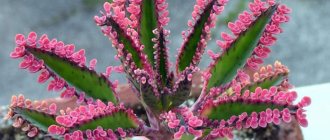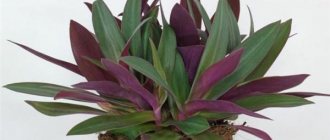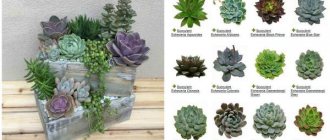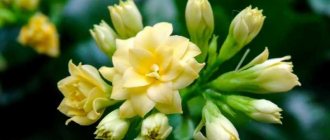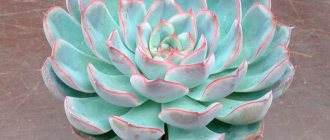- August 20, 2018
- Houseplants
- Alexander Nedashkovsky
Today, flower growers grow a wide variety of Kalanchoe varieties at home. The ornamental plant has medicinal properties. In addition, it has a beautiful appearance. Reproduction of Kalanchoe is not difficult even for inexperienced gardeners. This is probably why the plant is so common in our apartments.
Plant varieties
Throughout history, Kalanchoe has received many names - room doctor, tree of life, home healer... Our grandmothers always had this plant on their windows. Currently, there are many different species of this beautiful flower, including flowering representatives. They are the ones who are most popular. In nature, there are a total of more than 200 varieties of Kalanchoe. Only a few of them are grown at home. All of them are easy to care for and reproduce.
Kalanchoe can safely be classified as an unpretentious flower. The plants belong to the Crassulaceae family. Its homeland is the tropics, so the flowers are accustomed to long stays in wet and dry conditions. At favorable times, the leaves of the plant accumulate moisture, which they gradually use for survival. The flower takes root well in any home and does not require frequent replanting or fertilizing, which makes caring for it much easier. The plant is very resistant to pests and diseases. Even if you did something wrong and your flower began to die, you can always divide it into cuttings, which take root very easily. Reproduction of Kalanchoe is a simple process. Almost every rooted plant turns into a healthy and full-fledged flower.
Planting Kalanchoe
There are no particular difficulties in the process of planting Kalanchoe itself. The most important thing is to provide proper care in the future, which determines the growth of the plant, its health and the likelihood of flowering. So, the landing is performed as follows:
- First, pay attention to choosing a pot. It should match the size of the plant. The pot should not be tight or too loose for the flower. The material of the product in this case is unimportant. You can give preference to plastic, ceramics or glass and even choose metal counterparts. But the best option remains natural material.
- Next, the soil is selected. Kalanchoe is not picky about soil, but it is still advisable to give preference to acidic soils (if you plan to replant the plant, this should be done in April or May after all flower stalks have been removed, since the flowering plant cannot be touched). An excellent option is a special soil for succulents, into which one-fifth of the sand is added immediately before planting. At home, soil is made by mixing equal proportions of turf, humus, charcoal and sand.
- The pot must be filled with the selected mixture so that a few centimeters remain to the top edge. Remember that the bottom layer must be drainage.
- Then inspect the root system of the plant for rot. If it is detected, you need to carefully trim the areas using a sharp, disinfected instrument. Next, the cut area needs to be treated with ground cinnamon or crushed activated carbon.
- All that remains is to place the flower in the prepared soil, making a preliminary excavation. Hold the flower upright while gently covering the roots with soil. The top needs to be compacted a little. Then it is mulched, for example, with a layer of pebbles.
That's all, the Kalanchoe is planted in the ground. Now the plant needs to be properly cared for. In this case, it will grow without problems and delight you with flowering.
Medicinal properties
People have long been aware of the medicinal properties of Kalanchoe. It is for this reason that previously it could be found in any home. Not only the leaves, but also the stems are used for medicinal purposes. Kalanchoe is one of the few plants that purify indoor air and destroy germs, disinfecting the room. The flower copes well with the flu virus. If now we are accustomed to using pharmaceutical products for colds and runny noses, then previously Kalanchoe was considered the first assistant. You can use it to make cold drops. The juice of the plant is also useful for wiping the nasal mucosa.
Kalanchoe has a powerful anti-inflammatory effect. It has antibacterial, hemostatic and bactericidal properties. The plant copes well with wound healing, it removes harmful substances from the body and cleanses the blood.
The medicinal properties of the flower are based on the fact that it gives a surge of strength and vigor. It is believed that the presence of Kalanchoe in the house contributes to a friendly and favorable environment.
The medicinal properties of Kalanchoe are actively used in folk medicine. The leaves are mainly used, from which juice or pulp is obtained. The plant contains a large number of biologically active and healing substances, among them it is worth highlighting organic acids, flavonoids, tannins, mineral salts, vitamins, macro- and microelements. Kalanchoe juice is used for herpes, to boost immunity, and for physical fatigue. The plant is rich in vitamin C, and therefore is indispensable for vitamin deficiency. Kalanchoe juice is used as ear drops to treat warts, trophic ulcers, purulent wounds, and burns. For sore throat, dilute it with water and gargle with the resulting solution.
Reproduction by offspring
Usually the offspring form a large overgrown Kalanchoe bush. After its formative pruning, many side shoots grow on it. The bush shoots some of them almost from the very root, so their lower part remains in the ground. Over time, such shoots form their own roots, but remain connected to the mother plant. These are the offspring that are used to grow young bushes.
Small shoots cannot be separated from an adult bush, as they may not yet form roots . Typically, shoots that have reached 1/3 or ½ the height of an adult plant are used for propagation. They can be safely separated from the bush with a sharp knife and then transplanted into separate pots. From such shoots new plants develop surprisingly quickly.
Lighting
One of the most unpretentious indoor plants is Kalanchoe. Care after purchasing a flower is so simple that even a novice amateur gardener can handle it. The plant can be placed almost anywhere in your home as it thrives in indirect light and partial shade. You can also place the flower in direct sunlight. But at the same time, its leaves will change color slightly. Ideally, you should choose western or eastern windows, where the lighting is moderate.
For flowering species, the south-eastern and eastern direction is more suitable. In winter, the plant will need additional lighting. If a flower does not have enough light, it stretches and weakens. The upper leaves may turn pale and the lower leaves may die.
Which cuttings are suitable for propagation
In principle, you can even propagate a flowering plant, but choose cuttings without buds. Light pruning will not harm an adult Kalanchoe and will focus all its energy on opening flowers and growing new buds.
Cuttings can be obtained from lateral and apical shoots, including overgrown ones, by shortening them to 8-10 cm. Straight apical shoots with even leaves and small distances between nodes, in other words, not very elongated, are considered ideal for obtaining material.
Before making a cut, it is better to disinfect the knife with alcohol or peroxide. Ideally, finished cuttings should have 3 pairs of leaves left.
It doesn’t matter whether you have medicinal or decorative Kalanchoe. Cuttings are a universal propagation method; you just need to decide how to root the cuttings: directly in the ground or wait for the roots to appear.
Watering Kalanchoe
Very often, beginners do not know how to properly water Kalanchoe. The plant accumulates liquid in the foliage. Therefore, he is not afraid of a period of drought. For example, the plant will not dry out if you leave for a while. But overwatering has a detrimental effect on the flower. In this case, it is not the amount of water that plays the main role, but another factor. When watering, the earthen ball must be well moistened. But later the excess water must be drained. In order not to overdo it with watering, it is worth developing the correct regime. To do this, it is necessary to moisten the soil after it has completely dried in the pot. Water procedures can be performed more frequently only in the summer heat. In winter, on the contrary, it is necessary to water the plant no more than once every 10-14 days. If the soil moisture is excessive, its roots will begin to rot. In addition, excessive humidity promotes the development of fungal diseases and mold.
In principle, Kalanchoe does not need to be sprayed. In winter, high humidity is dangerous for the plant. But at the same time, the flower periodically needs to be rid of dust accumulated on the foliage. To do this, you can bathe Kalanchoe in the shower or wipe the leaves with a damp sponge.
Possible problems with breeding Kalanchoe at home
Although this easy-to-grow plant is called a house doctor, it can also get sick. Therefore, when propagating Kalanchoe, you need to be especially careful about the condition of the adult donor plant and compliance with the rules for growing the planted plants. Kalanchoe is the most resilient of all known succulents. The main reason for infection with diseases is its improper maintenance: insufficient ventilation and high soil moisture. This happens, for example, when a succulent is planted in soil that is not suitable for it: heavy and dense, with a large proportion of peat. Use store-bought soil mixtures for cacti and succulents, and in other cases add sand or vermiculite to the peat soil.
It is better to replace the soil if you notice that a young Kalanchoe plant has stopped growing and the soil in the pot is always wet.
Improper maintenance conditions most often cause powdery mildew
First of all, the appearance of the disease can be affected by overdoing watering. When growing Kalanchoe, a novice gardener should adhere to a simple rule - it is better to under-water than over-water.
If the disease manifests itself on the plant, you will have to resort to effective measures - the use of fungicides, choosing them depending on the type of disease. So, when the first signs of a flower disease are detected, the stems and leaves are sprayed with a fungicide solution prepared in accordance with the instructions for use.
Alirin-B is one of the most popular fungicides for indoor plants
There are several of the most common fungal diseases of Kalanchoe:
- late blight rot;
- gray rot;
- powdery mildew;
- stem rot.
Proper pruning
For some plant varieties, pruning is an essential part of care. This is especially true for flowering species. How to prune Kalanchoe? The pruning procedure must be drastic. The flower stalks are cut off completely, leaving no extra parts. Very often, flowering greatly weakens the plant. In this case, you will have to cut off all the bad looking and old parts of the flower. At the same time, young and strong shoots can be cut off and used for propagation of Kalanchoe. In summer, flower growers recommend pinching off the top so that new side shoots appear. If this is not done, the plant will stretch.
How to prune a Kalanchoe that does not bloom? Even non-flowering forms require periodic pruning. The plant usually grows in height quickly. A too huge flower clutters up the space, so it is necessary to cut off some of the branches and the crown so that the bush grows wider. The resulting cuttings can be used for rooting. Pruning allows you to rejuvenate the plant. Young bushes look more aesthetically pleasing and beautiful.
Recommendations from professional flower growers
- Professionals recommend flowering Kalanchoe, the propagation of which allows you to get many beautiful bushes, placed in bright places without direct sun. This will help to form a uniform crown without burns on the leaf plates.
- For planting material, use light soil, which is prepared from equal parts of peat, sand, garden soil and half the amount of humus. For planting grown specimens, heavier soil is used.
- Young Kalanchoe, cuttings of which were used for propagation, are kept in a dark place, constantly pinching the tops of the shoots. The procedure will allow you to form an even, lush crown with abundant flowering in the first year of cultivation.
- It is best to root leaves and cuttings in damp sand or sphagnum moss. Rooting in water very often leads to rotting of the lower part of the cutting.
Propagating Kalanchoe is not difficult at all. The plant almost never rots and takes root in just 10-20 days. And by providing it with proper care, you can enjoy abundant flowering every year.
Similar articles:
How to propagate jasmine - several ways
How to propagate Decembrist - several ways
How to propagate currants - the best ways
Different methods of reproduction
Kalanchoe is a plant that reproduces very easily. You can get new flowers in a variety of ways. The process of flower propagation is so simple that anyone can handle it. Plant propagation is carried out by children, seeds, stem and leaf cuttings, and offspring. Any method always gives good results. To propagate Kalanchoe by leaf, you can even use fallen old leaves, which take root incredibly easily.
Some varieties of the plant reproduce by children. Small daughter sprouts form on the leaves of Kalanchoe. Children look very much like adult plants. They have small leaves and roots. Adult succulents most often shed such buds themselves, which easily take root in the mother pot. Later they can be transplanted into another container. If you find formed shoots on the leaves, you can safely break them off and plant them in fertile soil.
Propagation by leaves can be carried out at any time of the year. A cut adult leaf is planted in a pot with a moist substrate. It is covered with a jar or glass on top. The leaf takes root in just a few days. Soon it will become an independent plant. Sometimes part of a leaf is used for propagation. It is buried in the ground and after some time a young plant develops from it.
How does a flower reproduce at home?
You can propagate at home using any method known to science:
- cuttings;
- leaf rooting;
- seeds;
- children's department;
- root suckers;
- axillary buds.
The best time for propagation of the plant will be the period of its active growth from mid-spring to late autumn.
When keeping a succulent indoors or in a greenhouse under additional lighting, the propagation process can be carried out at any time of the year.
Preparing the plant and necessary tools
A healthy plant in the right conditions does not need special preparation.
After vegetative propagation, Kalanchoe is able to quickly adapt and grow new shoots. The choice of propagation method should be determined by the plant variety. Common crops with abundant, bright flowering can be propagated in any way. For species that are valued for the decorative coloring of their foliage, an exclusively vegetative method is suitable by rooting cuttings or separating shoots. For sick and weak specimens, the only option may be propagation by leaves or axillary buds.
The variegation of the parent plant is never transmitted by seed propagation and is extremely rarely inherited through leaf rooting. To propagate a variegated specimen, it is necessary to root the cuttings.
For vegetative propagation methods, you need to acquire the following set of tools and materials:
- A sharp knife or blade.
- Coal powder.
- Fungicidal agent.
- A small container or pot.
- Succulent soil or coconut fiber.
- Perlite.
- Plastic jar 0.5 l.
For seed propagation you will also need certain equipment:
- A shallow plastic bowl with drainage holes.
- Pallet.
- Bottom heating source.
- Potassium permanganate or hydrogen peroxide.
- Land for succulents.
- Perlite.
- Sand.
- Small expanded clay.
- Cling film or plastic lid.
How to propagate cuttings in water?
Rooting by cuttings is the most practical method of propagation , allowing one to inherit the varietal characteristics of the mother plant.
Healthy plant segments remaining after pruning are suitable for propagation. You can also use a sharp knife to cut a Kalanchoe branch at least 8 cm in length with several active buds. The cut area on the plant must be treated with a fungicidal agent and sprinkled with charcoal to avoid infection. The cuttings need to be dried for several hours in a dry, warm place.
How to root?
After the cut branches have dried, you can begin the rooting process. To do this, you need to place the cuttings in a bottle with warm running water. The air temperature should be within 20 degrees, and the water temperature should not be lower than 25. You can add a little growth stimulating agent to the water and change the liquid every 2-3 days.
Since Kalanchoe is a succulent that does not require abundant watering, constant exposure of cuttings to water can lead to their rotting.
To root a succulent cutting, you can use the same method as for rooting bulbs. The plant branch should be 1-2 cm above the water, and the cut of the cutting should not touch the liquid.
The point of this rooting method is that the dehydrated fragment of the plant will feel the immediate proximity of water and will begin to pull aerial roots towards it. For convenience, you can use a plastic bottle, the height of which must be made several small holes, filled halfway with water and placed on its side. The cuttings are placed in the holes without immersing the cut in water.
With proper maintenance, the first roots may appear after a week. After the cuttings have developed a decent root system, they should be planted in loose succulent soil with the addition of perlite and watered as the top two-thirds of the soil dries.
Why doesn't the cutting take root?
A Kalanchoe cutting may not take root for a number of reasons, often unrelated to the conditions of detention:
- The cutting was cut from a diseased plant and does not have sufficient resources to grow roots.
- All the forces of the cut branch can be used to build up green mass - in this case, new leaves must be torn off.
- Rotting of the cuttings in water can occur due to the low temperature of the liquid. You can use bottom heating.
- Varietal characteristics - some types of Kalanchoe tolerate contact with water extremely poorly. It is better to root such cuttings immediately in the soil or in damp perlite.
Reproduction by children
Some species of Kalanchoe have the ability to produce babies. They appear in the buds of the plant.
They look like small rosettes with leaves and aerial roots. Over time, the baby may fall off the mother plant itself and fall nearby.
It is not necessary to wait for the baby to separate naturally. You can carefully break it off from the main plant while maintaining the integrity of the rosette and roots. The baby should be immediately planted in a separate pot with loose soil. Endowed with roots, the baby will quickly settle into a new place. You can water the plant after 2-3 days.
Leaf
Fallen leaves are suitable for propagation of Kalanchoe. You can also carefully tear off the leaf without damaging the stem. Only healthy, dense leaves without yellowness or damage are suitable for this procedure. The separated leaf must first be dried for several hours, and then rooting can begin. There are two ways to go here:
- Leave the leaf on any dry surface until the first roots appear, and then stick it into the ground.
- Place the leaf in the ground immediately with extremely scanty watering.
Rooting in both cases occurs due to the fact that the leaf dries out and loses its vitality, which serves as a signal for emergency reproduction. A plant segment first grows root mass and then new leaves. The young rosette is fed from the remaining resources of the mother leaf, which should not be separated until completely dry. Rooting should take place in a bright and warm place.
To save space, Kalanchoe leaves can be stuck into any pots with succulents that do not require abundant watering. As soon as new leaves appear, the plant should be transplanted into a separate container and the personal watering and fertilizing regime should be adjusted.
From the video you will learn how to propagate Kalanchoe with leaves:
Offspring
Kalanchoe Blossfeld is the only variety of this plant capable of producing root suckers that appear in the ground next to the mother plant. Their appearance can be provoked by active pruning of the plant or pinching the crown.
To reproduce this species, it is necessary that the plant's offspring grow up and reach one third the growth of the mother bush. Then the offspring must be carefully dug up and placed in separate pots with soil.
During the separation of the offspring from the root system of the mother plant, some of the tender roots may break off. In order to avoid plant rotting, children should not be watered earlier than 4-5 days after transplantation.
Axillary buds
Axillary buds in Kalanchoe are small rosettes with leaves, formed instead of a fallen leaf at the site of its attachment to the stem of the plant.
To propagate a flower by buds, you must wait until the replacement rosette grows to 2 cm. After that, you can cut it off with a sharp knife, treat the cut area with charcoal, and place the rosette in dry, loose soil with a high sand content. As soon as the bud takes root in the ground, the above-ground part will begin to actively grow.
Seeds
Sowing Kalanchoe seeds is not only an easy way to propagate a certain plant variety, but also a fascinating process.
Growing Kalanchoe from seeds will allow you to obtain a healthy specimen, adapted to the existing conditions.
To propagate a plant by seeds, you must follow a certain sequence:
- Mix soil from equal parts of peat, perlite and sand.
- Pour fine expanded clay into the bottom of a container with drainage holes and add soil on top.
- Spill the soil with warm water or a light pink solution of potassium permanganate.
- Kalanchoe seeds are quite small, so you should not bury them. It is enough to place the planting material on the surface of the soil.
- The distance between seeds should be at least 5 cm.
- The seeds should be lightly sprinkled with sand and moistened with a spray bottle.
- Cover the greenhouse with a lid or cellophane film.
- Place the container on the bottom heating and provide sufficient light.
The seeds must be ventilated twice a day for 15-30 minutes and sprinkled with water as the top layer of soil dries. Seed germination depends on the variety and shelf life. The first shoots may appear within a week.
With the appearance of the first pair of true leaves, the seedlings must be gradually adapted to room temperature. To do this, you need to gradually increase the ventilation time. After a month, the plants should be planted in separate pots and removed from the lower heating. In some specimens, it is recommended to pinch the tip to stimulate branching.
Propagation by cuttings
The simplest and most popular way to propagate Kalanchoe is by cuttings. It is relevant at any time of the year. For planting, you can use any twig that accidentally breaks off from the plant. This often happens during the process of flower transplantation. It is necessary to choose strong shoots as cuttings. They can be of any length, but it is worth shortening them to 6-8 centimeters. Typically, the tops of shoots are used for propagation.
They are cut and placed in a jar of water until roots appear, after which the young plants are planted in separate pots. Shoots can also be immediately planted in a moist substrate. They quickly take root in the nutrient mixture. The apical cuttings produce beautiful young plants.
Peculiarities of propagation of various varieties of living trees
Methods of propagation of Kalanchoe depend on the plant variety. Kalanchoe Degremona, Cirrus and Tubiflora are easily propagated by any method - cuttings, leaf rooting, children and offspring.
The Blossfeld and Mangina varieties can be propagated by cuttings, suckers and seeds, and the resulting plants will retain all the characteristics of the variety.
Kalanchoe Felt is easy to multiply with leaf and stem cuttings and seeds. Paniculate-flowered Kalanchoe well increases its population with axillary buds formed after flowering.
Photo gallery: Kalanchoe varieties
Felt Kalanchoe propagates well by seeds, leaf and stem cuttings
Kalanchoe pinnate can be propagated by cuttings, leaf rooting, children, offspring
Offspring of Kalanchoe Degremona can be easily obtained by offspring and cuttings, children and leaf rooting
Kalanchoe Blossefeld is propagated by seeds, suckers and cuttings
Kalanchoe Kalandiva (a dwarf variety of Kalanchoe Blossefeld) is propagated by stem cuttings
Reproduction by suckers, cuttings, seeds - any of these methods is suitable for Kalanchoe Mangina, the resulting plants will retain all the characteristics of the variety
At home, Kalanchoe Rosalina can be propagated using leaf and stem cuttings, which are rooted in water or moistened sand.
Kalanchoe tubiflora is easily propagated by cuttings, suckers, leaf rooting, and children.
Kalanchoe paniculata is best propagated by axillary buds
Other methods of reproduction
Sometimes Kalanchoe is propagated by offspring of the mother plant. To stimulate the process, it is necessary to pinch the tops of the stems, after which young shoots appear next to the old flower. This method can be used only after flowering. After the young plants have grown a little, they can be transplanted into another pot.
Some varieties of the flower shed their leaves after flowering, after which buds of new shoots appear in the axils. In appearance they resemble heads of cabbage. After they have formed a 1-2 centimeter stem, they can be cut with a blade and planted in the substrate. The buds take root within a week, after which active plant growth begins.
Kalanchoe can be propagated by seeds. In early spring, they are sown in moist soil and pressed down with hands. The soil is sprayed from above and covered with glass. Periodically, the soil must be ventilated and sprayed with a spray bottle. After the first shoots appear, the film or glass is removed forever. After some time, the grown seedlings dive. Young plants are planted in separate pots.
Peculiarities of reproduction of different types of Kalanchoe
Kalanchoe, which is reproduced in different ways in its various species, has several main methods of reproduction:
- brood buds (babies): Dergemona, pinnate, tubeflower;
- leaf cuttings: all types with large fleshy leaves;
- cuttings: Blossfeld, Mangina;
- offspring: Blossfeld;
- axillary buds: paniculate;
- seeds: pinnate, felt.
To root Kalanchoe planting material, use a mixture of humus, leaf soil, peat and sand (1: 1: 1: 0.5). Also suitable for this purpose are special soil mixtures sold in specialized stores. A drainage layer of expanded clay or clay shards must be placed at the bottom of the pots.
Replanting Kalanchoe
How to transplant Kalanchoe into another pot? This question arises sooner or later before every gardener. It is recommended to replant young plants annually. Older people - once every two to three years. The procedure must be carried out after flowering.
To replant, you need to purchase soil for Kalanchoe. At home, you can prepare the soil yourself, but the finished substrate contains all the nutrients necessary for the plant. The flower is removed from the container in such a way as not to damage the root system. To facilitate the procedure, the plant must be watered beforehand. The earthen ball along with the root system is placed on the drainage layer in a new pot. The voids around are filled with substrate. The planted plant is watered and then mulched with small pebbles. This will help reduce moisture loss.
Preparation
Before starting reproduction, the most optimal method for this is selected. If the goal is to obtain a large number of new plants, then it is better to plant seeds. If a few young plants “for yourself” are enough, then cuttings or rooting “babies” would be an excellent way.
Choosing a pot
When replanting, take a new pot a few centimeters larger than the previous one. Typically, containers from 12 to 18 centimeters in diameter are used. The size of the pot depends on the type of Kalanchoe. You should not purchase containers that are too large, since they will have a lot of space for the root system, which will grow, but the plant will not bloom. You can create entire compositions from flowering Kalanchoes. Ceramic pots are ideal for planting; flowers can breathe in them. And moisture leaves the soil naturally. Before planting Kalanchoe in a new flowerpot, it is necessary to treat its walls and bottom with hot water and a solution of potassium permanganate.
Care and conditions
To properly care for Kalanchoe, you do not need to purchase a lot of fertilizers and medications. The plant is very unpretentious , but nevertheless requires some care.
Kalanchoe becomes a successful decorative solution for the home and a valuable medicinal assistant if the conditions for flowering are suitable. Once you have purchased your Kalanchoe, place it away from other plants for 2 weeks.
During this period, you will be able to detect whether the plant is sick with something or whether it has parasites. At the same time, which is called adaptation, it is important to regularly water the plant to help the plant adapt to the conditions of its new location.
Lighting and temperature
Despite the fact that Kalanchoe is relatively easy to care for, compared to other plants, it also has its own characteristics. For example, lighting should always be as intense as possible . Therefore, place the plant on the windowsill where there is most light. If your goal is to speed up the flowering process, then remove the plant from the windowsill to a dark place before evening.
As for temperature, in summer Kalanchoe feels comfortable in a temperature range of up to 30 degrees. In winter, the plant blooms quite well even at temperatures up to 16 degrees. However, make sure that the temperature does not fall below 10 degrees, as in this case the rapid death of the plant is inevitable.
Air humidity
The plant does not require additional moisture . In hot weather, you can spray warm water onto the surface of the leaves, but it is important not to overdo it. In winter, do not additionally humidify the plant and air.
Kalanchoe thrives in a moderately humid room. Periodically, you can wipe the leaves with a piece of cloth soaked in water. If a comfortable moisture regime is not observed, the plant begins to rot and eventually dies.
Feeding and fertilizer
Kalanchoe should not be fertilized too often .
Once a month, feed the plant with a special composition. It has different names, but essentially it is a complex for feeding succulents. Before adding fertilizer, water the flower thoroughly. Remember that excessive administration of the drug promotes abundant flowering of green mass, and does not stimulate the appearance of flowers.
If you want abundant flowering, strictly follow the instructions on the surface of the bottle.
Watering
Since Kalanchoe is a succulent, it does not need to be watered too often. The plant accumulates moisture and uses it based on its needs . For this purpose, Kalanchoe has sufficiently fleshy leaves and stems. If you overdo it and water the succulent too often, the Kalanchoe will begin to rot.
In winter, water the plant once a week; in summer, increase the number of waterings to twice a week. Pour water under the root, do not direct the liquid onto the leaves.
If your goal is to decorate your interior with Kalanchoe, then feel free to purchase it. Caring for it does not require much time, and under the right conditions, the plant and its flowers will delight you for many years.
Possible problems
Why do Kalanchoe leaves turn yellow? This problem occurs for various reasons:
- Insufficient lighting can cause yellowing of the foliage. If a flower is exposed to less than 12 hours of light per day, it may begin to wilt.
- Kalanchoe is an unpretentious flower. It can grow in a wide range of temperatures. But when the temperature drops to +10 degrees, the foliage begins to turn yellow.
- Kalanchoe dries out most often due to insufficient humidity levels. The cause may be heating devices in winter. In this case, the plant must be sprayed daily with a spray bottle.
- Overwatering can cause a flower to wilt. The flower must be watered with settled water. In winter, the amount of moisture should be minimal.
If you have not been able to figure out why the plant dries out and turns yellow, then you will have to transplant it into a new container by adding fresh soil. During replanting, it is necessary to check the roots and remove rotten parts. Pay attention to whether there are pests on the plant. The root system can be treated with charcoal or other protective preparations. Kalanchoe is an unpretentious plant that does not require special conditions. The flower can safely be called a long-liver.
Germinating roots in water
It is safer to plant cuttings with roots, especially if the variety is valuable and you do not want to lose planting material.
To germinate roots, create favorable conditions for the cuttings:
- use a glass container;
- tap water and natural water will not work. It is better to take filtered or boiled;
— the entire period of root germination, the water temperature should be within 20-25 ° C;
- change the water every 2-3 days so that the cuttings do not rot;
- protect plants from direct sun, drafts and sudden temperature changes.
The roots will begin to emerge in about a week, and after another 7-10 days, a young plant with a decent root system can be transplanted into the ground.
Instead of an afterword
Kalanchoe is a universal plant that can be grown in any apartment. Ease of reproduction and simple care make it very popular. If previously our grandmothers grew non-flowering species, now flowering forms are incredibly popular. Abundant bright flowering in the cold season can delight gardeners for a long time. Due to the ease of propagation and rapid growth, the plant can be planted even in open ground in the warm season. You can root cuttings or plant a mother plant in your garden plot. Over the summer, young flowers will turn into beautiful bushes. And the mother plant will delight you with lush greenery and good growth.
Kalanchoe from seeds
Instructions for propagating Kalanchoe by seeds:
- Prepared Kalanchoe Blossfeld seeds are sown in open containers filled with well-steamed substrate to avoid infection and seed rotting.
- Shallow grooves are pressed onto the leveled surface of the substrate, into which the seeds are placed at a distance of 3–4 cm from each other.
- The seeds should be lightly pressed into pre-moistened soil.
- After some time, shoots appear.
The temperature in the room where Kalanchoe seeds are germinated should not fall below 20 °C
History of discovery and plant selection
Until recently, 35-40 years ago, no one could have imagined that this flower would cause such a stir among gardeners. In the wild, the plant is a small shrub with shoots from 30 to 50 cm in length. The flowering of this marvelous plant looks like small simple red flowers. This is exactly how the plant was seen and brought to Europe in 1932 by its discoverer R. Blossfeld.
At the end of the last century, Danish flower growers developed a stronger and more compact type of Kalanchoe than the wild ones. The leaves became larger in size, and the inflorescences acquired brighter and more saturated colors. The color palette has also changed: orange, yellow, pink, and white shades of the flower have appeared.
And at the beginning of the 21st century in Sweden, scientists found an interesting mutation, thanks to which today you can see Kalanchoe flowers not only with four petals, but also inflorescences with several dozen of them. This subspecies of the plant was called “Kalandiva” and became one of the most popular among gardeners. The coloring of the flowers of this subspecies is very diverse: there are individuals of soft green, orange, as well as variegated and two-colored ones. Kalandiva blooms for up to 2.5 months (regular Kalanchoe blooms for up to 1.5 months).
Top dressing
Kalanchoe is not picky. If you need to grow a large amount of material for treatment, then you can feed it with nitroammophoska.
Kalanchoe loves light, but is not afraid of the sun either. Therefore, you can safely place the flower on the windowsill on the sunny side.
Transfer
Kalanchoe still loves a cramped pot. The plant does not take root well in large pots. Therefore, the flower needs to be replanted as the roots grow.
Temperature
Kalanchoe is native to the desert, so this plant is very heat-loving. And the temperature regime must be maintained in accordance with the hot climate. The optimal temperature for Kalanchoe is from +20 to +28 degrees. At temperatures below +10, the Kalanchoe flower begins to freeze. At zero temperature, or at -1 degrees, the plant freezes.
Proper care and cultivation of Kalanchoe will delight gardeners with good growth. Homemade ginseng will help get rid of many diseases and bring many benefits.







